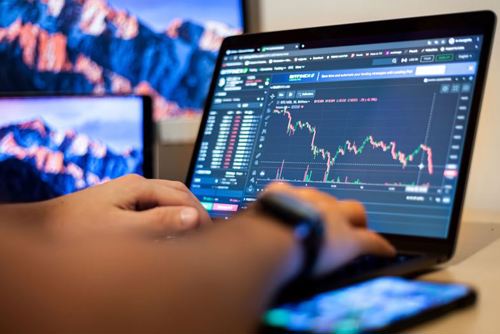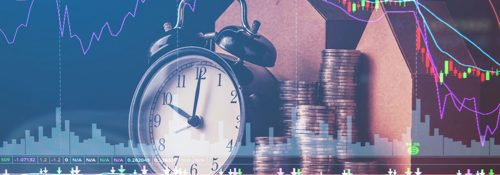
Blog
FOREX 101
Hello, everyone. This blog series of Arya Trader is designed to present some of the basics of the Foreign Exchange market. Starting from what Forex is, we will be dealing with the issues including how this market works, currency pairs, movement of pips, leverage ratios and many other related topics and concepts.
The foreign exchange market, also named as the forex market, has never witnessed such type of great attention and challenges. As the world's most traded financial market, Forex took the attention of millions of traders from all over the world with different experience levels. Depending on those conditions, Arya Trader is committed to serving the needs of its clients by providing the best education tools, customized services and our advanced platform.
If you are searching for ways to increase your profit, the Forex marketplace can be the right place for this purpose. Forex is the biggest market in the world for a reason: it enables everyone to possibly profit from currency changes related to the global economy, from central banks to small-scale investors. There are several reasons for FX trading. Banks, financial institutions, hedge funds, and individual investors all have a financial incentive to engage in speculative trading.
However, this exciting activity might be complicated especially for newcomers. As with everything you do, there are also risks of trading currencies on the foreign exchange market. What makes these risks more complicated is the fact that there are internal and also external factors that you do not have control over. For instance, your stock could decline and not recover as a result of political or national conflict. Therefore, new participants in the market should never underestimate the importance of financial education, experience and risk management skills in order to evaluate the commonly seen psychological factors and irrational action caused by internal and external factors in the Forex market.
Based on those factors, Arya Trader will provide the crucial information, concepts and techniques that every investor should keep in mind. This part of the series is for investors who know the potential of the market but need to know more how it works. Before going into the main concepts of the Forex market, it is important to understand what does Forex and Forex market exactly mean and how this market works in order to comprehend every other dimension of Forex trading?
What is Forex?
Forex basically represents a foreign exchange in which transactions of changing currencies one into another are carried out. The process of exchanging currencies when traveling abroad is similar to what Forex traders do. A trader buys one currency and sells another, and the exchange rate changes regularly based on supply and demand. For the purpose of turning a profit, this process can be performed by different motivations including international trade, commercial or tourism.
Forex is traded 24 hours a day, 5 days a week by banks, institutions and individual investors from all over the world. Unlike other financial markets, currencies trade over the counter in whatever market is open at that time because of the lack of a centralized marketplace. This is known as an over the counter (OTC) market.
What is the Forex Market?
The Forex Market is a decentralized market which enables buying and selling different currencies by exchanging money from all over the world. It became the world’s most liquid market thanks to its enormous size with trillions of dollars in daily transactions, 24-hour access between Monday and Friday, a wide variety of currencies and currency pairs, and low account minimums and low transaction costs.
Unlike shares or commodities, forex trading does not take place on exchanges but directly between two parties, in an over-the-counter (OTC) market. The forex market is run by a global network of banks, spread across four major forex trading centers in different time zones: London, New York, Sydney and Tokyo.
Some currencies' price movements might be particularly volatile because of the large amount of currency that is exchanged every day. This volatility, which increases both the danger and the potential for huge returns, is what can make forex trading so attractive to traders.
How Does the Forex Market Work?
The majority of forex trades are performed to speculate on future price fluctuations, much like stock trading, rather than to exchange currencies Like stock traders, forex traders aim to either buy currencies they believe will increase in value relative to other currencies or sell currencies they believe will decrease purchasing power.
There are three different ways to trading forex, which can satisfy investors with diverse objectives:
The Spot market is the primary forex market where certain currency pairings are traded and exchange rates are set in real time according to supply and demand.
In the forward market traders can enter into private contracts to buy or sell a set amount of a currency at a specified price, for an agreed upon amount of currency on a future date. As a very similar to forward forex market, the future forex market enables one to enter into contract to buy or sell a set amount of a given currency at a set price and date in the future. Unlike the forward forex market, a future contract is legally binding.
The majority of forex traders who want to speculate or protect themselves against potential fluctuations in currency prices use the forward and futures markets. The spot market, the biggest of the forex markets and the location of the majority of forex trades, serves as the basis for the exchange rates used in these markets. *
Since every market has its own language, we will be focusing on the must know concepts in forex trading in this section of this tutorial.
So, let’s start with currency pairs.
Currency Pairs
Before entering your first trade, one of the first things you should know is currency pairs and what they mean for your transaction.
In the forex market, currencies always trade in pairs. A currency pair is the quotation of two different currencies, with the value of one currency being quoted against the other. The first listed currency of a currency pair is called the base currency, and the second currency is called the quote currency.
Currency pairs compare the value of one currency to another—the base currency versus the second or the quote currency. It indicates how much of the quote currency is needed to purchase one unit of the base currency. If the price of the EUR/USD currency pair is 1.5143, it means that it costs you 1.5143 U.S. dollars to buy one euro.
Investors in the market can trade with several different currency pairs. There are pair groups such as major, minor, exotic, and regional pairs.
The major pairs involve the US dollar and include USD/JPY, GBP/USD, USD/CHF, and EUR/USD. These four currency pairs account for 80% of forex trading. Only SEVEN major currency pairs are the most liquid pairs in the world.
Compared to the minors and exotics, the price moves more frequently with the majors, which provides more trading opportunities.
Cross-currency pairs, also referred to as the "crosses," are any two major currency pairs that exclude the U.S. dollar. Major crosses are also known as minors.
The crosses are still quite liquid and continue to offer a variety of trading opportunities, although not being traded as frequently as the majors. An exotic currency is a currency from countries with developing or emerging markets. Exotic currency pairs are made up of one major currency pair with the currency of an emerging economy, such as Brazil, Mexico, Chile, Turkey, or Hungary.
Basically, an exotic currency pair includes one major currency alongside an exotic currency.
Then there are regional pairs, which are named for different geographic regions, for example, Australasia or Scandinavia. AUD/SGD, EUR/NOK, and AUD/NZD all count as regional pairs.
The US dollar is by far the most traded currency in the world, with a daily trading volume exceeding $5 trillion. The data also shows that the Euro is second, with more than $2.1 trillion in daily trading activity, and that the Japanese Yen and the British pound are the third- and fourth-largest currencies, with $1.1 trillion and $844 billion in daily trading volume, respectively.
By far, we talked about what the forex market is? How does this market work? ways of forex trading? and currency pairs. In the second part of this tutorial, we will be focusing on the concepts of pips, spread, leverage, and then we will finish this blog by providing you some basic information about trading platforms.


